Menus
- Six-cylinder dinosaur
- The engine of the Kawasaki Z 1300 weighs 120 kilograms
- Information about the Kawasaki Z 1300
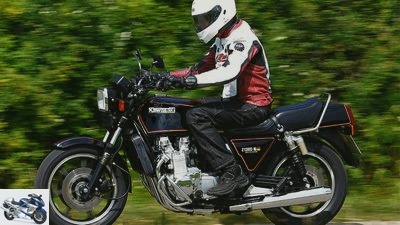
fact / Joachim Schahl
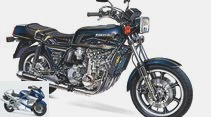
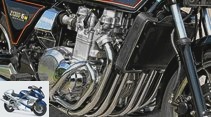
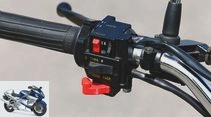
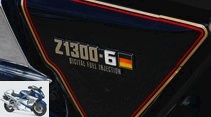
15th photos
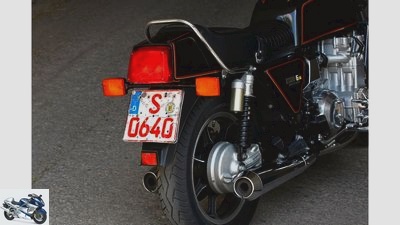
1/15
Cult bike Kawasaki Z 1300.
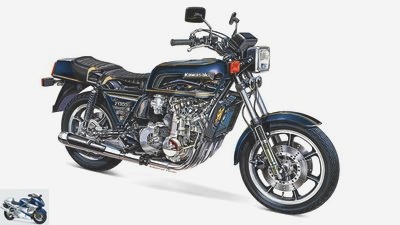
2/15
Six cylinders, water cooling – the engine alone weighs 120 kilograms. From 1978 to 1983 three Mikuni twin carburettors took care of the fuel supply. An injection system from 1984 to the end of production in 1989.
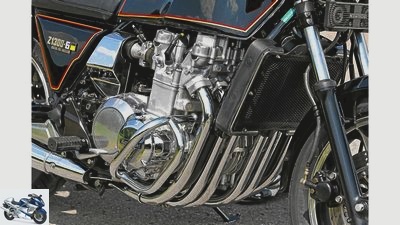
3/15
In Germany officially only with 100 HP (in the picture the injection model). Long people sit very comfortably. Also above the popular retrofit struts.
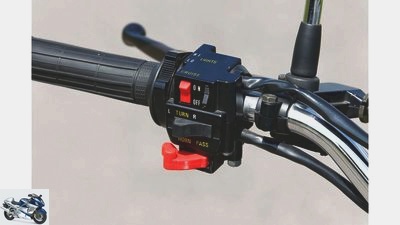
4/15
Cult bike Kawasaki Z 1300.
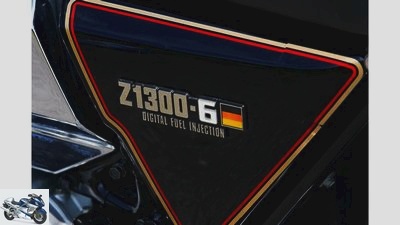
5/15
Cult bike Kawasaki Z 1300.
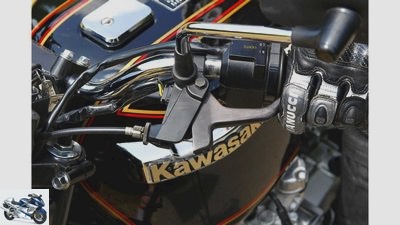
6/15
Cult bike Kawasaki Z 1300.
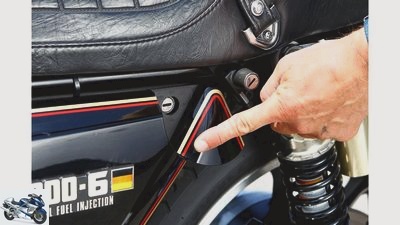
7/15
Cult bike Kawasaki Z 1300.
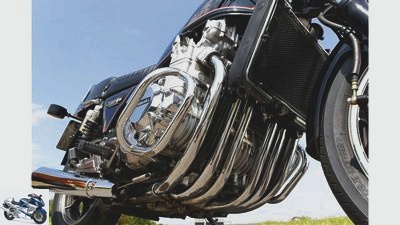
8/15
Cult bike Kawasaki Z 1300.
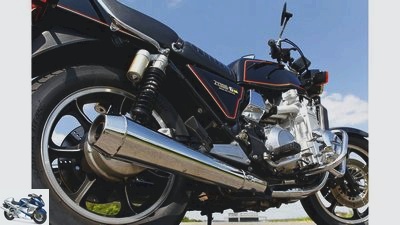
9/15
Cult bike Kawasaki Z 1300.
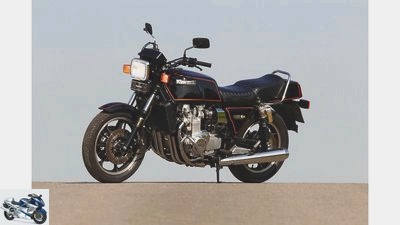
10/15
Cult bike Kawasaki Z 1300.
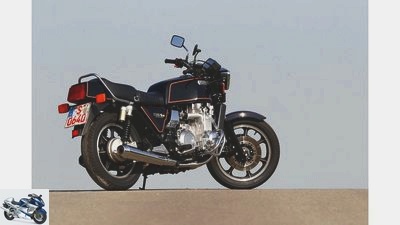
11/15
Cult bike Kawasaki Z 1300.
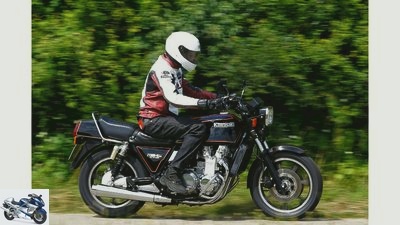
12/15
Cult bike Kawasaki Z 1300.
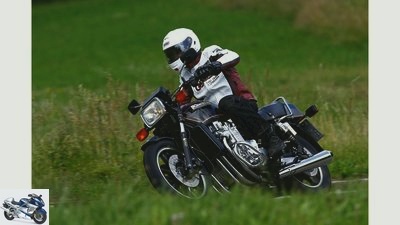
13/15
Cult bike Kawasaki Z 1300.
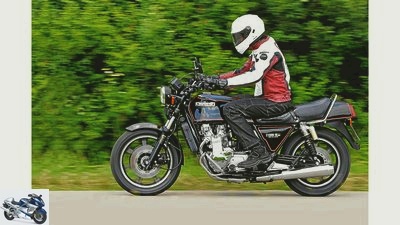
14/15
Cult bike Kawasaki Z 1300.
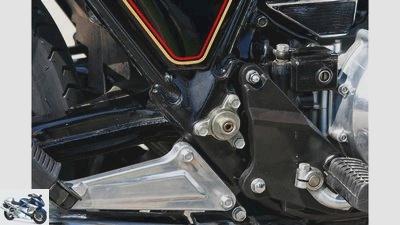
15/15
Cult bike Kawasaki Z 1300.
Cult bike Kawasaki Z 1300
Six-cylinder dinosaur
Bitterly angry letters to the editor, editorials under the motto “Seeds of violence”, expert panels on the subject of “Voluntary self-restraint” – the six-cylinder Dino Kawasaki Z 1300 moved hearts. And it was probably a little late.
Actually, Kawasaki had done everything right: The development of the first and only six-cylinder motorcycle in the company’s history began at a time when senior teachers and disgruntled people who were bad at work had not yet assumed the scepter of sovereignty. Around 40 years ago, motorcycles were allowed, yes, had to get bigger, stronger and probably also heavier in order to be successful (at least in terms of marketing). With six cylinders and 1200 cubic meters, well over 100 hp and a more sporty orientation that would be Kawasaki Z 1300 was really way ahead. Had, would, if – everything was wasted, everything turned out differently.
Buy complete article
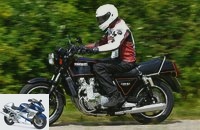
Cult bike Kawasaki Z 1300
Six-cylinder dinosaur
Kawasaki Z 1300 at the IFMA in Cologne in 1978, an unholy alliance was formed between representatives of the Ministry of Transport, TÜV and industry. The disarmament conference then led to the “voluntary self-restraint of manufacturers and importers”. From then on, 100 hp was the measure of official performance in Germany. And Kawasaki was just a little late with the Z 1300.
The engine of the Kawasaki Z 1300 weighs 120 kilograms
The said 100 HP had to do with 330 kilograms of combat weight plus the driver, which made for nice, but not outstanding performance. The Kawasaki Z 1300 was an imposing and extremely comfortable cardan tourer, it wasn’t really an awe-inspiring technology carrier. The ambitious new price (1979: 12,250 marks, 1989: 16,500 marks) was joined by high gasoline and initially also oil consumption, quite limited lean angle and rather limited dynamic talent. Which didn’t really bother Z 1300 fans, because the unique engine noise, the turbine-like, almost vibration-free revving and the perfect seating position for people over 1.90 meters were and are still worth the six sin.
Apart from the fully boarded battleships of the Touring and Voyager series, which were not officially imported into Germany, Z 1300 fans have two variants to deal with: the open 120 HP carburettor version and the open 130 HP fuel injection model called Kawasaki, which was sold from 1984 onwards Z 1300 DFI. For people who just want to drive, the DFI is the much more recommendable alternative. However, Kawasaki was able to sell just 370 of these in Germany within five years. In addition, 200 special models with the sonorous name Legendary Six were added in 1989 as part of a large sweep. At that time, however, only a few knew how to appreciate the cult character, the extremely tough sales in some cases dragged on into the 1990s. Maybe today the time is ripe again for a (used) Z 1300 – as a fat alternative to the whole downsizing and eco hype.
Information about the Kawasaki Z 1300
Data: Water-cooled six-cylinder four-stroke in-line engine, 1286 cm³, 74 kW (100 PS) at 7750 / min, 106 Nm at 6000 / min, five-speed gearbox, double-loop frame made of tubular steel, weight 330 kg with a full tank, tires 100/90 V 18 at the front, rear 130/90 V 17, tank capacity 27 liters, top speed 217 km / h, 0-100 km / h in 4.9 seconds.
Literature: “Motorcycles that made history: six-cylinder” by Jan Leek, Motorbuch Verlag (1993), only available as an antiquarian for 45 euros; More MOTORRAD stories about the Kawasaki Z 1300 at www.motorradonline.de/z1300
Specialists: Popko Motorradsport in Braunschweig (Kawasaki dealer, boss Hans “Pauli” Lier is “Z 1300 whisperer”), www.popko.de; Motorcycle Center Gockeler / MCG (very extensive Internet parts shop), www.z1300.de
Market situation: The Z 1300 was never a bestseller, around 550 units are currently still registered in Germany. The second-hand offer is correspondingly modest, but for 5500 to 7500 euros you can get well-hung copies – mostly from the first year of construction.
Club / IG / Internet: www.z1300.net (the active IG-Z 1300 has existed since 1994).
Related articles
-
Zerha 10 pictures archive 1/10 1991 Kawasaki Zephyr The alternative to higher-faster-further: The naked bike with air-cooled four-cylinder …
-
Cult bike Yamaha FZR 1000 Exup
Hartmann cult bike Yamaha FZR 1000 Exup The big hit of 1989 Rarely has a motorcycle been improved so dramatically as the already great …
-
On the move: Benelli 750 Sei, Honda CBX 1000, Kawasaki Z 1300
Bilski 17th photos Bilski 1/17 Who is the widest in the whole country? The angle of spread of the driver’s legs provide information. Bilski 2/17 With…
-
archive 16 photos markus-jahn.com 1/16 Fished from the slide archive: Honda CBR 600 F (PC 31). fact 2/16 Fished from the slide archive: Honda CBR 600 F…
-
Comparison test: BMW K 1300 GT, Kawasaki 1400 GTR, Yamaha FJR 1300 A
Gargolov Comparison test: BMW K 1300 GT, Kawasaki 1400 GTR, Yamaha FJR 1300 A Great tourers in Corsica In the touring segment, there is hardly a way…
-
Comparison test Harley-Davidson Fat Boy, Kawasaki 1500 VN, Yamaha XVZ 1300 A
Comparison test, Harley-Davidson Fat Boy, Kawasaki VN 1500 Classic, Yamaha XVZ 1300 A Royal Star Harley-Davidson Fat Boy, Kawasaki 1500 VN, Yamaha XVZ…
-
archive 5 photos archive 1/5 BMW K 75 C.. archive 2/5 The triple is just as reliable and linear as the four, but sounds much nicer from 6000 rpm. archive…
-
archive Cult bike Benelli Tornado 650 Benelli Tornado 650 An Italian fad – showing prototypes that won’t go into production until years later – used to…
-
Kawasaki Z 1300 cult bike with inline six-cylinder.
archive Kawasaki Z 1300 Cult bike with water-cooled in-line six-cylinder. BMW recently started offering a motorcycle with a water-cooled straight six…
-
Cult bike Honda GL 1000 Gold Wing
archive 6th photos Markus Jahn 1/6 Markus Jahn 2/6 Honda 3/6 Travel motorcycle with smoothness and comfort: the Honda GL 1000 Gold Wing from 1974….